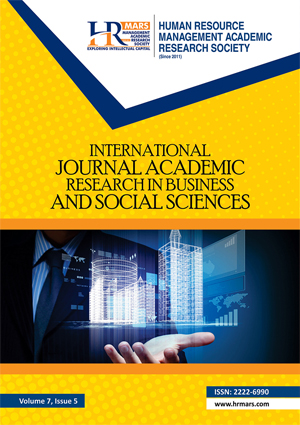
ISSN: 2222-6990
Open access
The aim of the current study was to identify the cultural needs in Arabic language classes for non-native speakers. Using a descriptive approach, the researcher collected data through a questionnaire that covered four main areas: Social Cultural Needs, Political Cultural Needs, Economic Cultural Needs, and Literature, Arts, and Heritage Cultural Needs. The questionnaire was administered to a sample of 100 participants. The findings revealed a variation in the cultural needs of the students, with the highest need being for Social Cultural Needs and the lowest for Political Cultural Needs. The overall mean score was 3.9, indicating a high degree of need based on the established standard. This study is significant as it leverages the identified cultural needs of non-native Arabic learners, aiming to incorporate them into the curriculum. It also provides a valuable reference for teachers, including guidelines on cultural concepts and contemporary methods for teaching and evaluating culture for non-native Arabic learners.
Al-Bahri, A. A. (2018). Cultural difficulties in acquiring the Arabic language from the perspective of non-native learners [Unpublished master’s thesis]. Nizwa University.
Al-Daajah, F. (2019). A perspective on teaching language and culture to non-native Arabic speakers through Arab folklore stories and tales. *Journal of the Faculty of Education, 73*(1), 351–369. https://search.mandumah.com/Record/1022199
Al-Hadaqi, I. (2018). Teaching theoretical and practical culture. King Abdullah Bin Abdulaziz International Center for Arabic Language.
Al-Husseini, A. (2019). The reality of Arabic language teaching for non-native speakers in the Sultanate of Oman [Unpublished doctoral dissertation].
Al-Jabri, A. R. (2020). The reality of integrating Omani culture in teaching Arabic to non-native speakers in the Sultanate of Oman [Master’s thesis, Nizwa University]. Omani Research Repository Shuaa.
Al-Mahrouqi, W. (2009). Cultural alienation of the Omani personality in the era of globalization: A field study in Muscat Governorate [Master’s thesis, Sultan Qaboos University]. Digital Library. https://lib.moe.gov.om/home/items/content/3655/55525#book
Al-Rashdan, A. (2004). *Sociology of education*. Al-Shorouk for Publishing.
Al-Sharqawi, A. (2017). Language and culture in the Arabic language teaching program for non-native speakers: A linguistic study in light of applied linguistics [Master’s thesis, Sohag University]. Dar Al-Manzooma Publishing.
Barhouma, I. (2014). Islamic culture in Arabic language teaching curricula as a second language. *Arabic for Non-Native Speakers Journal*(17), 193–251. https://buhuth.org/ar/paper/pThu060718045912r2059
Barhouma, I. (2021). *Culture, identity, and values in Arabic language curricula for non-native speakers*. Dar Kunoos Al-Ma'rifah for Publishing.
Brown, D. (1994). *Principles of language learning and teaching* (A. Al-Rajhi & A. Shaaban, Trans.). Dar Al-Nahda Al-Arabia. (Original work published 1980)
Daoud, M. (2009). *The dialectic of language and thought*. Gharib for Printing and Publishing.
Eldin, A. (2015). Teaching culture in the classroom to Arabic language students. *Canadian Center of Science and Education Journal, 8*(2), 113–120. https://doi.org/10.5539/ies.v8n2p113
Husseini, M. H. (2010). A comparative study of experts’ and teachers’ perspectives on the cultural content in Arabic language textbooks in higher education institutions in Malaysia. *Reading and Knowledge Journal*(101), 230–258. https://yarab.yabesh.ir/yarab/handle/yad/166076
Kramsch, C. (2013). Culture in foreign language teaching. *Iranian Journal of Language Teaching Research, 1*(1), 57–78. https://doi.org/10.1590/2176-457333606
Krejcie, R. V., & Morgan, D. W. (1970). Determining sample size for research activities. *Educational and Psychological Measurement, 30*(3). https://doi.org/10.1177/001316447003000308
Mabrouk, I. (2006). Evaluating the cultural content of Arabic language books for non-native speakers in light of learners' motivations and needs [Master’s thesis, Ain Shams University]. Ain Shams University Library. http://research.asu.edu.eg/handle/12345678/27632
Madhkour, A. (2010). *The reference in Arabic language teaching curricula for speakers of other languages*. Al-Fikr Al-Arabi Publishing.
Omar, T. (2017). Culture and second language acquisition: Arabic language as a model. *European Scientific Journal, 13*(2), 159–166. https://doi.org/10.19044/esj.2017.v13n2p159
Othman, R. (2015). The effectiveness of proposed instructional units based on Arab culture in developing speaking and writing skills among Arabic language learners for non-native speakers in Jordan. *Al-Jinan Journal, 7*(8), 184–215. https://digitalcommons.aaru.edu.jo/aljinan/vol7/iss1/8/
Rahmawati, A. (2016). Cultural foundations in teaching the Arabic language at the Islamic Seminary [Master’s thesis, University of Malang]. http://etheses.uin-malang.ac.id/8547/1/14720033.pdf
Tayma, R. (2006). *Communicative language teaching: Between curricula and strategies*. Islamic Educational, Scientific and Cultural Organization.
Thompson, S. K. (2012). *Sampling* (3rd ed.). Wiley & Sons Inc.
Maqbali, L. R. AL, & ALAlawneh, M. K. (2025). The Cultural Requirements in Arabic Classes to Non-Native Speakers. International Journal of Academic Research in Business and Social Sciences, 15(4), 573–584.
Copyright: © 2025 The Author(s)
Published by HRMARS (www.hrmars.com)
This article is published under the Creative Commons Attribution (CC BY 4.0) license. Anyone may reproduce, distribute, translate and create derivative works of this article (for both commercial and non-commercial purposes), subject to full attribution to the original publication and authors. The full terms of this license may be seen at: http://creativecommons.org/licences/by/4.0/legalcode